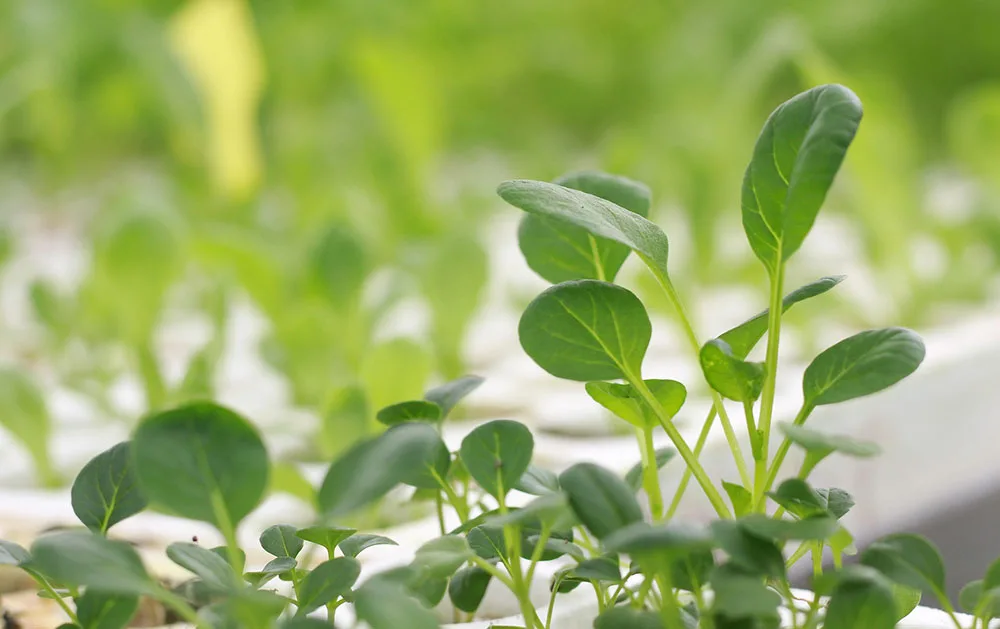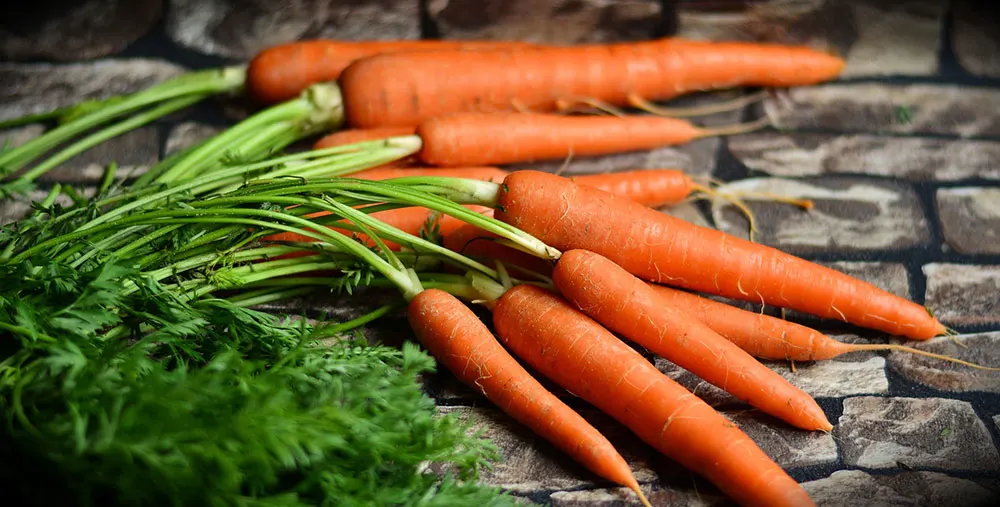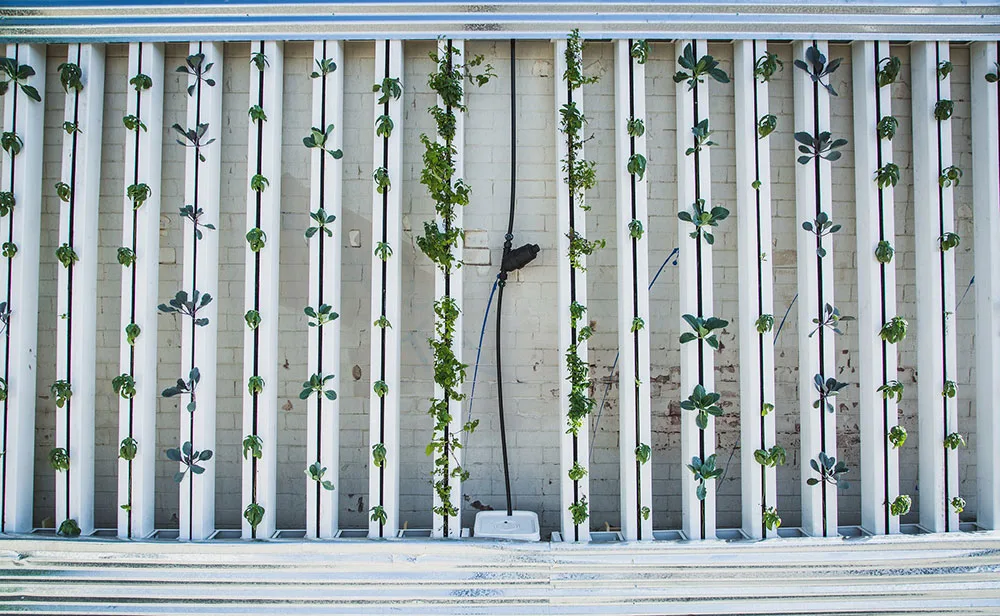Aeroponic growing, while it may look wildly different from the conventional hydroponics setup, is still part of the family of hydroponics systems that uses no soil and a nutrient reservoir to deliver moisture and nutrients to plants.
What is aeroponics, anyway?
When you’re running an aeroponic system, your plants are literally suspended in mid-air. And the reason for this is quite simple: being suspended in mid-air allows for the unfettered growth of the root mat, which is de facto the most important structure of a plant.

What makes aeroponics so interesting as a hydroponics system is it does away with the submersion of the crops’ root mass, allowing for its almost wild growth. The result is nothing short of stunning – fast growth, more weight during harvest and a system that runs literally on a misting mechanism.
Interested? Here are our top 15 benefits of aeroponic growing:
Benefit #1: It’s less complicated – Aeroponics systems use misters instead of the more conventional setup like NFT or ‘ebb and flow’ systems.
The misters are simply aimed at the direction of the root mats and a precise timer dictates when the water will wash over the roots. As a result, the roots get more oxygen while getting the water and nutrients it needs.

Benefit # 2: It uses fewer resources than conventional farming – If we were to compare aeroponics with conventional farming, you would see immediately what the world is missing out on. With a bit of help from technology, crops grow faster and they’re healthier, too!
You get to harvest your crops more quickly compared to plants in soil setups and at the same time, you save on resources while you’re at it.
Benefit # 3: Room air is the medium. – Obviously, the most striking difference between aeroponics and conventional hydroponics is that it doesn’t need grow pots and grow media to work.
The grow medium is what replaces the soil in a soil-free setup. In a conventional hydroponics setup, it serves as the absorber and distributor of the nutrient solution.
The air spaces in the grow medium also allow for the aeration of the roots of the crops.
Benefit # 4: The roots get more oxygen. – This is probably the best benefit of aeroponics, right next to the fact that you’re using a misting machine to actually grow plants.
The root mats of plants need oxygen to flourish, but we didn’t know just how much they LOVED oxygen until aeroponics came into the picture.
Minus soil and being submerged, the roots can grow massively with just water and open air.
Benefit # 5: It helps you save water. – Misting may sound like it will waste a lot of water, but it doesn’t, and here’s why: when you mist the root mat of plants, the excess just drips back to the nutrient reservoir.
Nothing is really wasted because evaporation of water contributes to the humidity of the place, which is also needed by the plants.
Benefit # 6: You will get better results. – This is one benefit that you can take to the bank.
If you want an approach that drastically minimizes root rot and just guarantees healthy plants until harvest, pick aeroponics. It may sound daunting in the beginning, but trust us, it’s a superior approach.
Benefit # 7: The system is easier to maintain. – Of course, this is a subjective appraisal from someone who has had experience with running a hydroponics system, but it still remains that aeroponics has such fewer moving parts that it is just a boon to people who get confused with juggling too many variables.

Benefit # 8: The equipment is simpler. – Maintaining a misting machine is easier than trying to maintain several water pumps, air pumps and what not, in conventional hydroponics setups.
And since you will be acquainted with one major type of machine, you will be able to master how it functions and possibly how to even fix it in a short span of time.
Benefit # 9: It’s easy to identify problems. – There are only two things that can really go wrong in an aquaponics system.
The first is when one or more misting heads are no longer delivering sufficient moisture and nutrients to the plants.
This can be due to a clogged head, a faulty timing mechanism, etc. The second one is obvious – if the power goes out, the misting will stop.
Both major problems are easy to solve with a backup power supply and some spare parts.
Benefit # 10: Maintenance is a breeze. – For the most part, you will be just checking the nutrient solution and the pH of the water, as well as making sure that the misting heads are functioning properly.

Benefit # 11: You work with fewer components. – As you perfect your system, you will be able to master how to create ideal conditions in your aquaponics setup.
You will be able to upgrade as necessary when your misting machine is no longer ideal, and all this will come in due time as you observe how your crops respond to the system itself.
Benefit # 12: You can experiment with different kinds of plants. – Since your plants will be suspended, you can grow large plants if you want to – it depends on your preferences.
You will not be weighed down by the constraints of grow pots.
Benefit # 13: You can combine this system with other systems. – It sounds crazy, but you can. You can replace your conventional setup with a misting setup even if you have an aquaponics system at home.
The water will still be routed from the fish tank and you will get the same results since it’s just nutrients and moisture being sprayed onto your plants.
Benefit # 14: It’s easier to master. – Again, with fewer variables, you will be able to master your aquaponics system in no time.
Benefit # 15: It is easily scalable. – People often think that aeroponics is hard to scale, but it’s not.
All you have to do is do a bit of plumbing, add more misting heads, and voila – you can add more plants.
***
Heather Fitzpatrick is someone who enjoys gardening & also teaching others about it. She runs OriginHydroponics.com, a site focused on teaching others how to garden without using soil.
